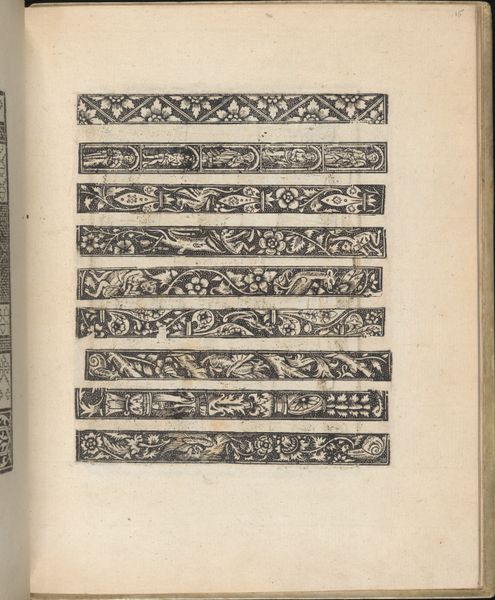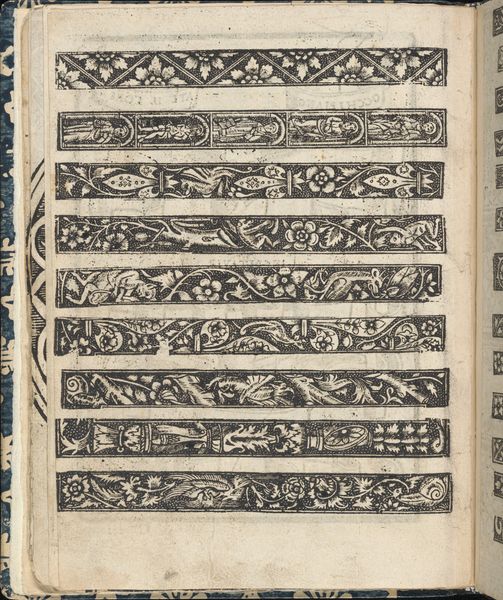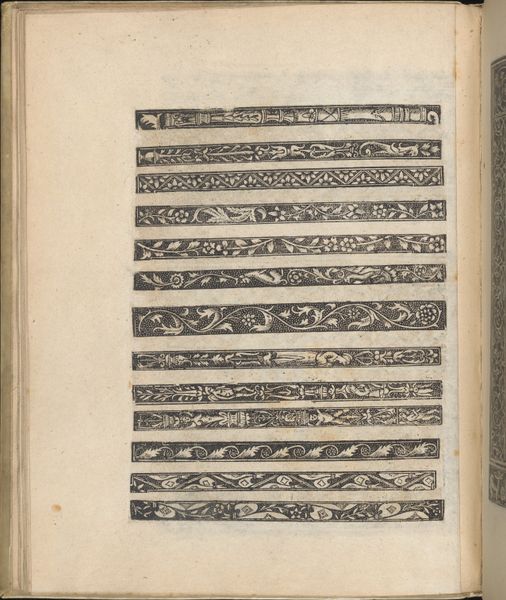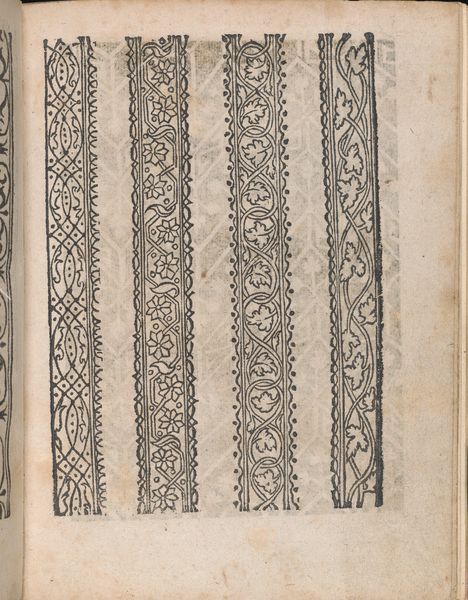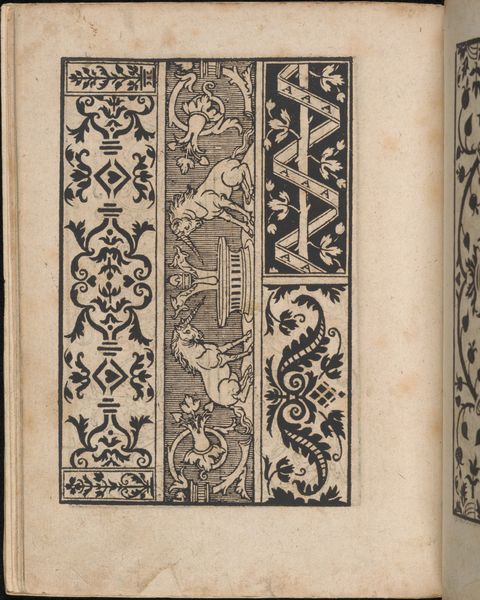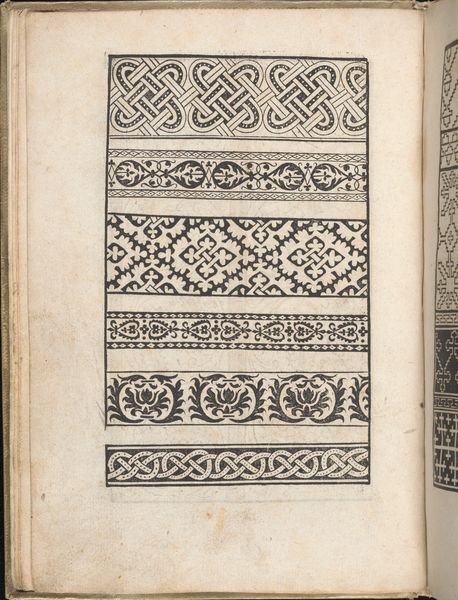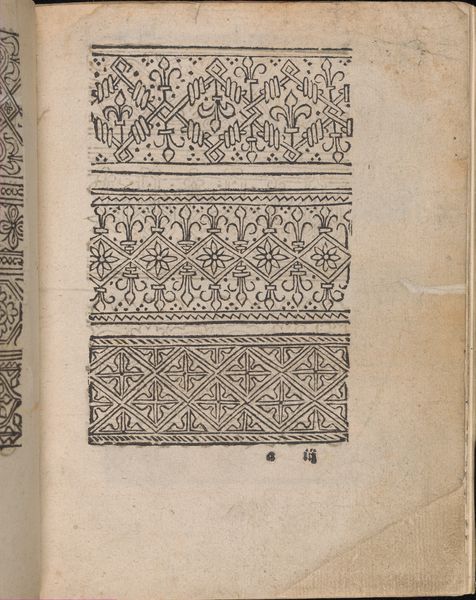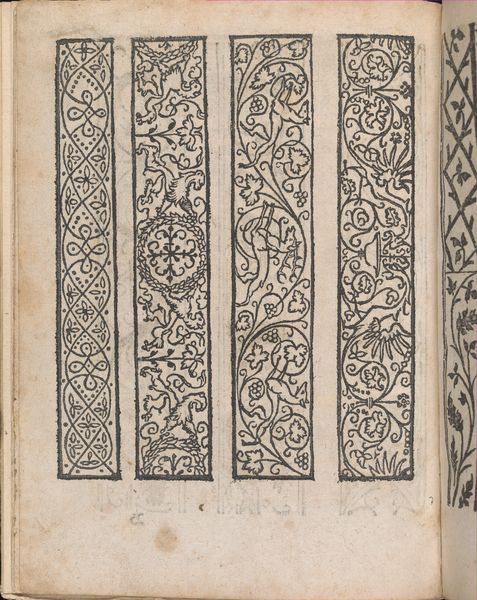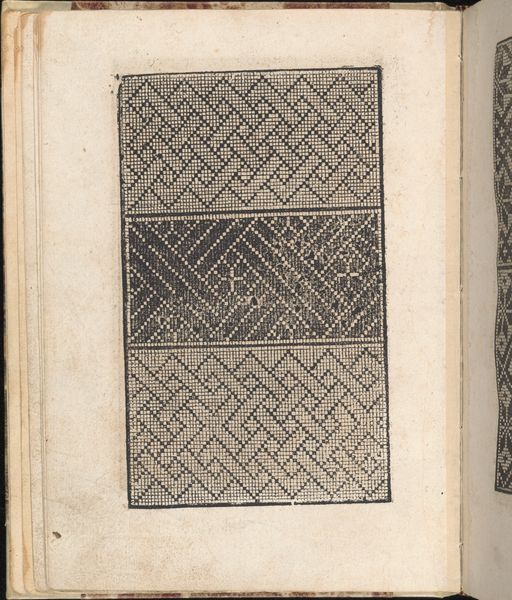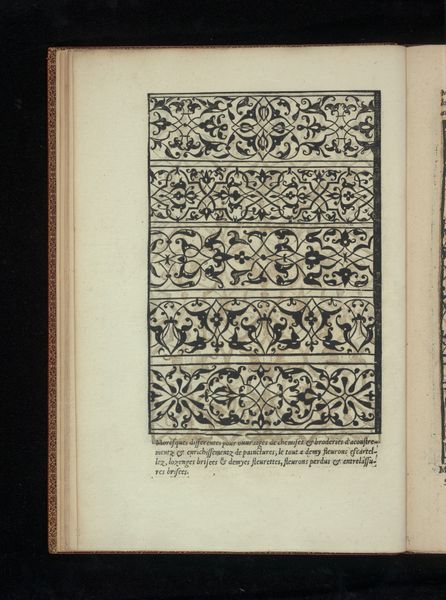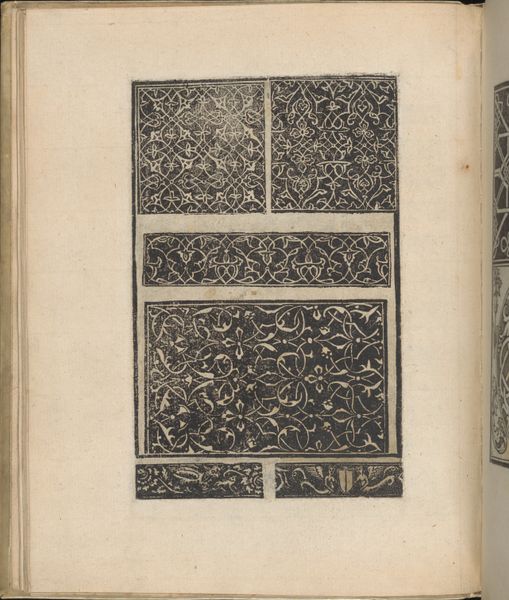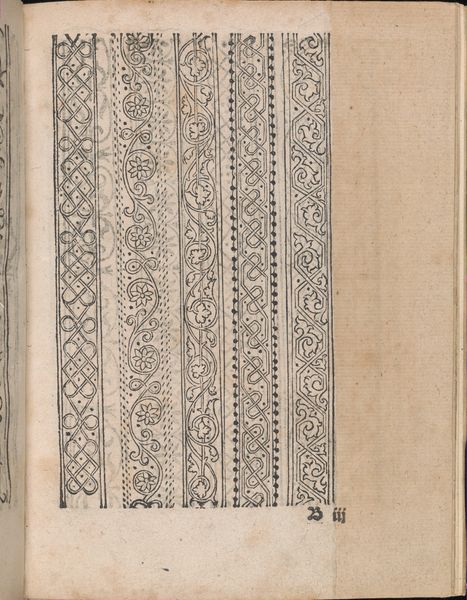
drawing, graphic-art, ornament, print, paper, engraving
#
drawing
#
graphic-art
#
ornament
# print
#
book
#
paper
#
line
#
decorative-art
#
italian-renaissance
#
engraving
Dimensions: Overall: 7 13/16 x 6 3/16 x 3/8 in. (19.8 x 15.7 x 1 cm)
Copyright: Public Domain
Editor: Here we have "Essempio di recammi, page 20" from 1530 by Giovanni Antonio Tagliente, it's an engraving print on paper showcasing different ornamental border designs. What strikes me most is how each pattern feels distinct yet made using a similar linear vocabulary, and the obvious care and labor evident in their creation. How should we read into this? Curator: This isn't simply about aesthetic patterns; it's a document revealing the material conditions of 16th-century production and consumption. Look at these designs. They are essentially templates, reproduced through engraving for dissemination. We must think about the engraver's labor, the availability of paper, and the social demand for such ornament. What social strata had the privilege of time and resource to engage in detailed needlework such as that exemplified here? Editor: So you're saying it highlights not only artistic skill but also access to resources? Does that change how we traditionally value this as a work of "art"? Curator: Absolutely. The mass-produced nature of engravings democratized design, yet also reveals a hierarchy: the wealthy could afford to employ these patterns, indicating their status. The material process of printing and the consumption of the printed material is equally, if not more important, to its high Renaissance design. Consider who benefits, materially and socially, from this system. How might it reflect contemporary forms of production? Editor: It reframes how I see the Italian Renaissance; rather than just individual genius, it shows networks of labor, commerce, and even social aspirations embedded in something seemingly decorative. Curator: Precisely. We move from solely admiring a finished product towards questioning the systems of power and the resources that make art possible, then and now. Editor: Thank you, that shifts the focus to how material creation ties to social and economic considerations! Curator: Indeed!
Comments
No comments
Be the first to comment and join the conversation on the ultimate creative platform.
